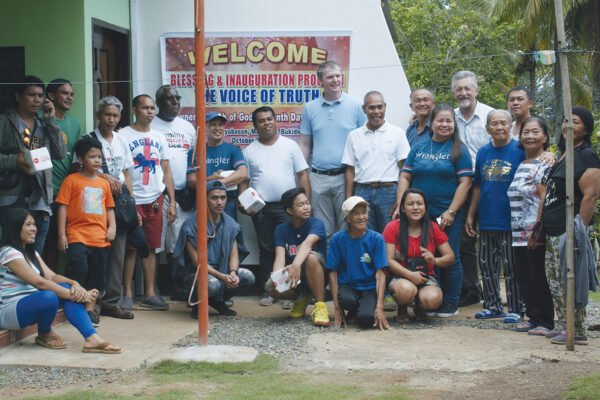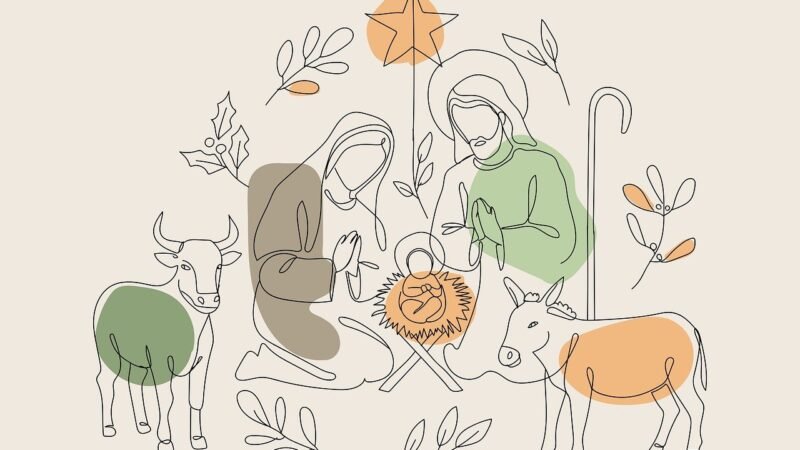The theme of reconciliation is as old as humanity itself. Because of sin, humans damaged their relationship not only with God but also with their neighbor. Because of the Fall, communion between Adam and Eve was lost, giving rise to individualism. Both covered themselves with fig leaves, which they had not needed before: “I was afraid because I was naked; and I hid myself” (Genesis 3:8-10). Their relationship with creation was broken too.
Sin makes us fugitives because we know we have intentionally failed. Filled with fear and guilt, humans distance themselves from their Creator. The prophet Isaiah states this sad fact: “Behold, the Lord’s hand is not shortened, that it cannot save; nor His ear heavy, that it cannot hear. But your iniquities have separated you from your God” (Isaiah 59:1, 2a).
Sin produces estrangement and paralysis in humanity. Therefore, reconciliation is undoubtedly God’s initiative. It is an act of love that comes from the heart of our Creator toward anyone who has offended Him. It is pure grace, mercy, and forgiveness available to all.
Old covenant reconciliation
God established atonement, prefiguring the ministry of reconciliation, as a priority of Israel’s ancient priesthood: “And Moses said to Aaron, ‘Go to the altar, offer your sin offering and your burnt offering, and make atonement for yourself and for the people. Offer the offering of the people, and make atonement for them, as the Lord commanded’” (Leviticus 9:7; cf. 16:6).
Leviticus 16 describes the Day of Atonement. The passage includes the story of Azazel, the male goat (scapegoat) that was expelled into the desert and took with him the sins of the people. The text literally reads:
[Aaron] is to cast sacred lots to determine which goat will be reserved as an offering to the Lord and which will carry the sins of the people to the wilderness of Azazel. The other goat, the scapegoat chosen by lot to be sent away, will be kept alive, standing before the Lord. When it is sent away to Azazel in the wilderness, the people will be purified and made right with the Lord” (vv. 8-10, NLT).
This text is difficult to interpret, as the etymological origin of the name Azazel is uncertain. We understand that it means “go to a desert.” What is clear is that this male goat represents an act of purification, because he takes the sins of everyone with him into the desert to make reconciliation between God and His people. Some believe the scapegoat was a type of Christ, who went out to the mount of the skull bearing the sins of the people. John the Baptist suggests this: “Behold! The Lamb of God who takes away the sin of the world!” (John 1:29; cf. Isaiah 53:6, 12).
Because Israel was forgiven on Yom Kippur (Day of Atonement), the Feast of Tabernacles, the last of Israel’s seven festivals that followed right after in the fall, was a celebration of joy and love. Everyone shared the abundant fruit of creation, rejoicing together in God’s reconciliation (Leviticus 23).
New covenant priesthood
In the New Testament, as fulfillment of the old covenant, the ministry of reconciliation is an essential part of the priesthood of all believers. Sin moves like a raging sea that covers all of humanity, without any distinction of race, language, or social class; every person is sinful. This does not apply just to Israel but to the whole world.
The apostle Paul quotes the condition of the human being from Psalm 14, writing a succinct, devastating statement: “There is none righteous, no, not one” (Romans 3:10). By opting to sin, every individual has broken their relationship with God, imitating Satan, the master and lord of enmity, violence, division, resentment, and death.
In the face of universal evil, God surprised us by bringing to light something unthinkable for us: the new creation, in which reconciliation is fundamental. Paul writes:
Therefore, if anyone is in Christ, he is a new creation; old things have passed away; behold, all things have become new. Now all things are of God, who has reconciled us to Himself through Jesus Christ, and has given us the ministry of reconciliation (2 Corinthians 5:17, 18).
In the famous parable about the love of God, the prodigal son (Luke 15:11-32), God the Father waits for us to accept reconciliation. But the older son is also there, unwilling to reconcile himself with his brother. In him is a piercing hurt of bitterness and resentment. This is the other side of the coin — the other reality of many men and women who prefer the path opposite of God. In other words, instead of a priesthood of reconciliation, there is separation.
Reconciliation defines us
In the future, the ravages of separation caused by sin will be completely overcome, for God promises to unite us to Himself forever in Christ: “Then the Son Himself will also be subject to Him who put all things under Him, that God may be all in all” (1 Corinthians 15:28b). This is total and ultimate reconciliation.
If I had to define with just one word the most important task of Christians, without a doubt I would say reconciliation. This is what we do by evangelizing, sharing the Word of God. As a priesthood of believers, we reconcile men and women with each other, with creation, but above all, with their Creator.
While we wait for the final reconciliation, God invites us to be priests in His marvelous work as active reconcilers. In the end, everything will be as it was intended in the beginning, before sin. So let’s embrace the privilege of participating in reconciliation, the incomparable plan of God.








